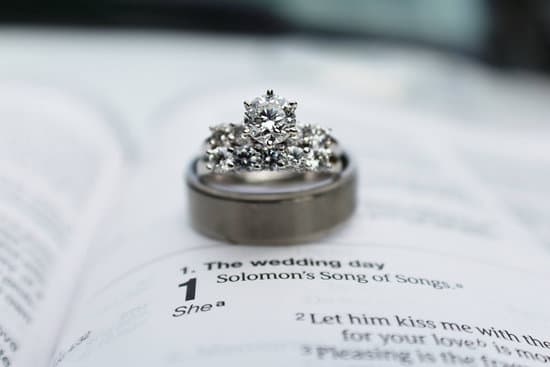Are you wondering how long does a wedding last and why it matters? Understanding the duration of a wedding is crucial for planning and scheduling various aspects of the event.
From the ceremony to the reception, knowing how long each segment typically lasts can help couples and planners create a seamless and enjoyable experience for everyone involved. Whether it’s considering cultural traditions, choosing between a traditional or non-traditional format, or simply ensuring that guests have a clear timeline for the day, understanding the length of a wedding is key to successful event coordination.
The average length of a wedding ceremony will vary depending on various factors such as religious or cultural customs, personal preferences, and the inclusion of special rituals. This section will provide an in-depth look at the typical duration of a wedding ceremony, including both traditional and non-traditional elements that can impact the timeline.
In addition to the ceremony itself, there are pre-ceremony activities like getting ready, first looks, and any pre-ceremony rituals that may extend the timeline. By understanding how these elements contribute to the overall duration of the event, couples can effectively plan their day to accommodate these important moments.
The Ceremony
The wedding ceremony is often seen as the highlight of the entire event, where the couple exchanges vows and commits to a lifetime together. However, when it comes to planning a wedding, understanding how long the ceremony typically lasts is crucial for creating a realistic timeline for the day.
Traditional Length
On average, a traditional wedding ceremony typically lasts between 30 minutes to an hour, depending on the specific customs and rituals involved. This includes the processional, exchange of vows, ring exchange, unity ceremonies (such as lighting candles or pouring sand), and the recessional.
Non-Traditional Elements
Couples who choose to incorporate non-traditional elements into their ceremony may find that this can impact the duration. For instance, personalized vows, readings by friends or family members, musical performances, or cultural rituals can all extend the length of the ceremony. It’s important for couples to communicate with their officiant and coordinator to ensure that these elements are seamlessly integrated into the timeline.
Tips for Planning
When planning a wedding ceremony, couples should consider their desired elements while also being mindful of their guests’ comfort. Communicating with their officiant and wedding coordinator about timing expectations can help ensure that every aspect of the ceremony is accounted for without dragging on too long.
Additionally, providing programs or signage to inform guests about what to expect during the ceremony can help manage expectations and keep everyone engaged throughout. Ultimately, understanding how long a wedding ceremony lasts allows couples to create a meaningful and well-paced event that sets the tone for their special day.
Couples Should
also communicate with their photographer and videographer about any timing considerations so that they can capture every moment without feeling rushed or missing key highlights. By understanding how long a typical wedding ceremony lasts and taking into account any traditional or non-traditional elements involved in their specific event, couples can create an unforgettable experience that truly reflects their love and commitment.
Pre-Ceremony
When it comes to planning a wedding, one of the key factors to consider is how long the event will last. This includes not only the ceremony itself but also the pre-ceremony and post-ceremony activities.
The pre-ceremony portion of a wedding day can set the tone for the entire event and can significantly impact the overall timeline. From getting ready to intimate first looks, and any pre-ceremony rituals, these activities are important to plan carefully in order to ensure a smooth and enjoyable wedding day.
The pre-ceremony activities typically begin with both the bride and groom preparing for their big day. This may involve hair and makeup appointments, getting dressed, and putting on any final touches before heading to the ceremony venue.
Additionally, many couples choose to have a first look before the ceremony begins. This private moment allows the couple to see each other for the first time before walking down the aisle, and while it’s an emotional and beautiful part of the day, it can also add extra time to the schedule.
Another aspect of pre-ceremony activities that may extend the timeline is any pre-ceremony rituals or traditions that are important to the couple or their families. This could include cultural ceremonies, religious rites, or special customs that require additional time to complete. It’s important for couples to consider these elements when creating their wedding day timeline as they can significantly impact how long the pre-ceremony portion of the day lasts.
In summary, when planning a wedding, it’s essential for couples to carefully consider how long each portion of their big day will last. The pre-ceremony activities such as getting ready, first looks, and any pre-ceremony rituals all play a significant role in setting the tone for the rest of the celebrations.
By taking these elements into account and factoring them into their wedding timeline, couples can ensure that their special day runs smoothly and allows for maximum enjoyment for themselves and their guests.
Post-Ceremony
After the wedding ceremony, there are several post-ceremony activities that can impact the overall duration of the event. One of these activities is the receiving line, a tradition where the newlyweds and their families stand in a line to greet and thank each guest for attending the wedding.
The length of a receiving line can vary depending on the number of guests, but it typically lasts around 30 minutes to an hour. However, larger weddings with many guests may require more time for the receiving line, so couples should factor this into their timeline.
Another important post-ceremony activity is family photos. This is when the couple takes formal photos with their immediate families as well as extended family members. Family photo sessions usually last about 30 minutes to an hour, depending on the size of the family and any specific photo requests. It’s essential for couples to communicate with their photographers and organize a shot list ahead of time to ensure that this process runs smoothly and efficiently.
Following family photos, many weddings include a cocktail hour where guests can mingle, enjoy drinks and hors d’oeuvres, and start celebrating with the newly married couple. Typically lasting about an hour or two, cocktail hours provide a relaxed atmosphere for guests while allowing the couple some time for additional photographs or much-needed downtime before the reception begins.
Couples should consider using this time wisely by having food stations or entertainment to keep guests engaged and entertained while they await dinner or other planned activities.
Overall, the post-ceremony activities can add significant time to a wedding day’s schedule. Couples should carefully plan these events into their timeline and also discuss these details with their vendors – especially photographers – to ensure everyone is on board with timing and expectations of how long each activity will take place.
Communicating these details effectively will contribute to balanced execution during such events making sure everything runs smoothly without sacrificing any special moment on such memorable day how long does a wedding last?
Reception
The reception is often one of the most highly anticipated parts of a wedding, as it is a time for celebration, socializing, and creating lasting memories with loved ones. On average, the reception can last anywhere from 3 to 5 hours, depending on the specific events and activities planned. One of the main factors that influence the duration of the reception is the inclusion of dinner, toasts, dances, and any additional entertainment or activities.
Dinner typically takes up a significant portion of the reception timeline. Whether it’s a plated meal or a buffet-style service, couples should consider allocating at least an hour and a half for their guests to enjoy their meals. This allows for proper pacing and ensures that everyone has ample time to eat and converse with those seated at their table.
Following dinner, toasts are a customary part of most wedding receptions. From heartfelt speeches by parents and close friends to lighthearted roasts by members of the bridal party, these speeches can add an additional 30 minutes to an hour to the reception timeframe. Couples should work with their chosen speakers to coordinate the timing so that these special moments don’t extend too long.
The traditional first dance between the newlyweds usually signals the start of open dancing for all guests. Whether it’s one special dance or several choreographed numbers throughout the evening, couples should budget at least an hour for dances.
Additionally, any other planned entertainment or activities such as photo booths, lawn games, or live performances will also impact how long the reception lasts. By carefully planning each element and allowing sufficient time for each activity, couples can ensure that their reception flows smoothly and provides an enjoyable experience for all in attendance.
Wedding Timeline Tips
When creating a wedding timeline, it’s essential to ensure that the event flows smoothly and is enjoyable for both guests and the bridal party. Here are some tips and advice for crafting a wedding timeline that keeps everyone engaged and on schedule:
1. Consider the Ceremony Length: The average length of a wedding ceremony is typically around 30 minutes, but this can vary based on cultural or religious traditions. It’s important to factor in any special rituals or readings that may extend the ceremony, as well as the time needed for seating guests and the processional. Ensuring there is enough time for the ceremony without feeling rushed can set the tone for the rest of the event.
2. Allow for Transition Time: After the ceremony, there is often a transition period where guests move from one location to another, or where the bridal party takes photos. It’s crucial to plan for this transition time in your timeline to avoid any gaps in activities or long waits for guests.
3. Reception Activities: When planning out the reception timeline, consider how long each activity will take. From dinner service to speeches and dances, each element should be given adequate time without feeling too drawn out. Additionally, if there are any special entertainment or activities planned during the reception, make sure to allocate enough time for these as well.
4. Communication with Vendors: Keep open lines of communication with all vendors involved in your wedding day – from photographers to caterers to entertainers. Understanding their needs and timelines can help ensure everything runs smoothly on the big day.
By carefully considering these aspects when creating your wedding timeline, you can help ensure that your special day unfolds seamlessly and that both you and your guests have an unforgettable experience from start to finish.
Cultural and Religious Considerations
Weddings are steeped in tradition and cultural significance, and these elements can have a significant impact on the duration of the event. Depending on the cultural or religious background of the couple, there may be specific rituals, ceremonies, or customs that can extend the length of the wedding festivities.
For example, in a traditional Hindu wedding, multiple ceremonies such as the Saptapadi (seven steps around the sacred fire) and Kanyadaan (giving away of the daughter by her father) can add several hours to the overall event. Similarly, in a Catholic wedding, there may be specific rites such as the lighting of the unity candle or a full mass ceremony that can affect how long the wedding lasts.
In addition to specific ceremonies or rituals, different cultures may place a strong emphasis on extended periods for celebration and feasting. In some Asian cultures, multi-day weddings are common where each day is devoted to specific activities and observances. This can result in a significantly longer wedding celebration compared to more Westernized single-day events.
Furthermore, religious considerations can also dictate certain restrictions or guidelines regarding when weddings can take place and what activities can occur within them. For example, in traditional Jewish weddings, there are specific times during which weddings cannot be held due to religious observances like Shabbat and other holidays which might influence how long does a wedding last.
| Religions/Cultures | Impact on Wedding Length |
|---|---|
| Hindu | Multiple ceremonies adding several hours to overall event |
| Catholic | Specific rites may add time like lighting unity candle or full mass ceremony |
| Asian Cultures | Multi-day celebrations resulting in longer duration events |
Understanding these cultural and religious considerations is crucial when planning a wedding and creating an accurate timeline for all involved. Couples should work closely with their officiant or religious leader to fully understand the time commitments required for their specific ceremony. Additionally, having this knowledge allows couples to communicate effectively with their vendors and guests about what they should expect in terms of timelines and schedules for each part of the celebration.
Ultimately, embracing cultural and religious traditions adds depth and personal significance to a wedding but also requires careful consideration when creating a timeline that ensures a smooth flow of events while respecting these important customs.
Alternative Wedding Formats
When it comes to planning a wedding, there are many different formats and styles that couples can choose from. Some may opt for non-traditional options such as elopements, micro-weddings, or destination weddings. These alternative formats can have a significant impact on the duration of the event, as they often involve fewer guests and different schedules.
Elopements are becoming increasingly popular for couples who want a more intimate and private ceremony. These small, often spontaneous weddings typically involve only the couple, an officiant, and one or two witnesses. As a result, elopements tend to be much shorter in duration compared to traditional weddings. The entire event can last anywhere from just a few minutes to a couple of hours, making them an ideal choice for couples seeking simplicity and minimal planning.
Micro-weddings are another alternative format that has gained popularity in recent years. These events are slightly larger than elopements but still involve a significantly smaller guest list compared to traditional weddings. Micro-weddings typically last between two to four hours, including the ceremony and reception. With fewer guests to accommodate and fewer formalities involved, micro-weddings offer couples more flexibility in terms of timing and structure.
Destination weddings are yet another non-traditional option that can impact the duration of the event. These weddings take place in locations away from the couple’s hometown and often involve multiple days of celebration. While destination weddings can vary in length depending on the couple’s preferences, they typically span over several days with various activities such as welcome parties, excursions, and farewell brunches.
In summary, alternative wedding formats such as elopements, micro-weddings, and destination weddings offer couples unique options for their special day. Understanding how these formats can impact the duration of the event is essential when planning for a smooth and enjoyable celebration.
| Wedding Format | Average Duration |
|---|---|
| Elopement | A few minutes to a couple of hours |
| Micro-Wedding | Between two to four hours including ceremony and reception |
| Destination Wedding | Several days with various activities spread out |
Conclusion
In conclusion, the duration of a wedding can vary greatly depending on a range of factors, from the type of ceremony to cultural and religious traditions. Understanding the various elements that can impact the timeline is crucial for couples as they plan their special day.
By taking into account the pre-ceremony activities, the length of the ceremony itself, and post-ceremony events such as family photos and cocktail hours, couples can create a wedding timeline that ensures a smooth and enjoyable event for everyone involved.
When considering how long does a wedding last, factors such as reception activities and cultural or religious considerations must also be taken into account. Whether it’s traditional dances or customs unique to specific cultures, these elements can significantly impact the overall duration of the wedding celebration. Additionally, alternative wedding formats like elopements or destination weddings bring their own set of considerations when it comes to the timeline, making it important for couples to plan accordingly.
Ultimately, knowing how long a wedding lasts allows couples to create a well-organized timetable that ensures everything goes according to plan on their special day. By taking into consideration all of these factors, couples can plan for an event that not only reflects their personal style but also provides an unforgettable experience for themselves and their guests. With proper planning and attention to detail, couples can create a truly memorable celebration that will be cherished for years to come.
Frequently Asked Questions
How Long Is a Wedding From Start to Finish?
The length of a wedding from start to finish can vary depending on the customs and traditions of the couple. On average, a wedding ceremony lasts about 30 minutes to an hour, while the reception typically lasts around 4-5 hours.
Is 4 Hours Long Enough for a Wedding Reception?
A 4-hour wedding reception can be long enough for many couples, especially if they carefully plan the timing of events such as dinner, speeches, and dancing. However, some may prefer a longer celebration, so it ultimately depends on the preferences of the couple and their guests.
What Is the 30 5 Minute Rule for Weddings?
The 30-5 minute rule for weddings suggests that no one event during the reception should last longer than 30 or 5 minutes. This rule helps keep the flow of the reception smooth and prevents any part of the celebration from feeling too lengthy or dragged out.

Welcome to my blog about home and family. This blog is a place where I will share my thoughts, ideas, and experiences related to these important topics. I am a stay-at-home mom with two young children. I hope you enjoy reading it! and may find some helpful tips and ideas that will make your home and family life even better!





